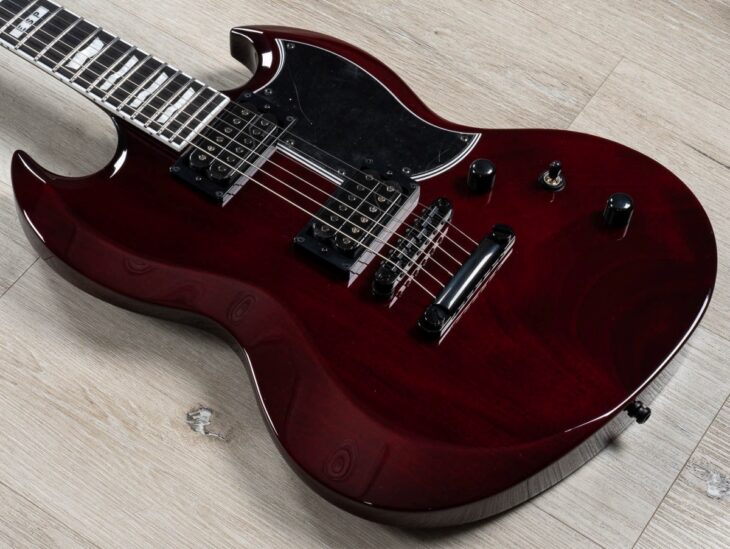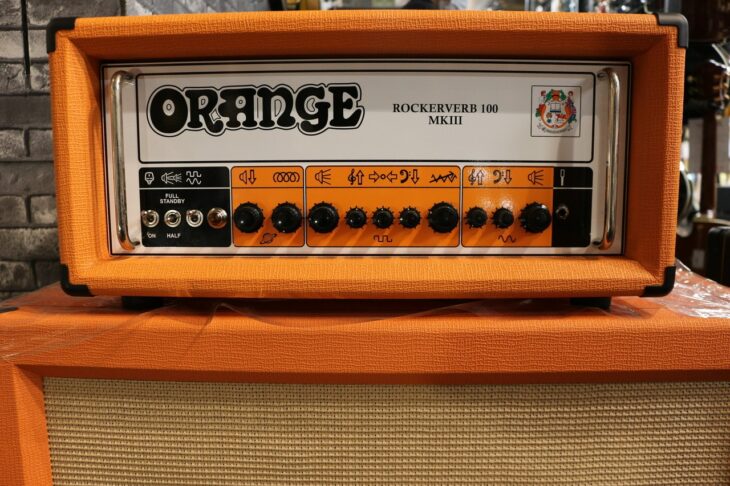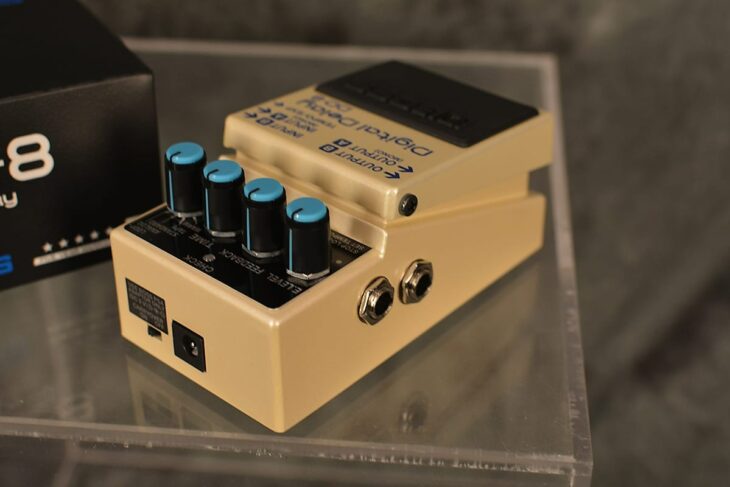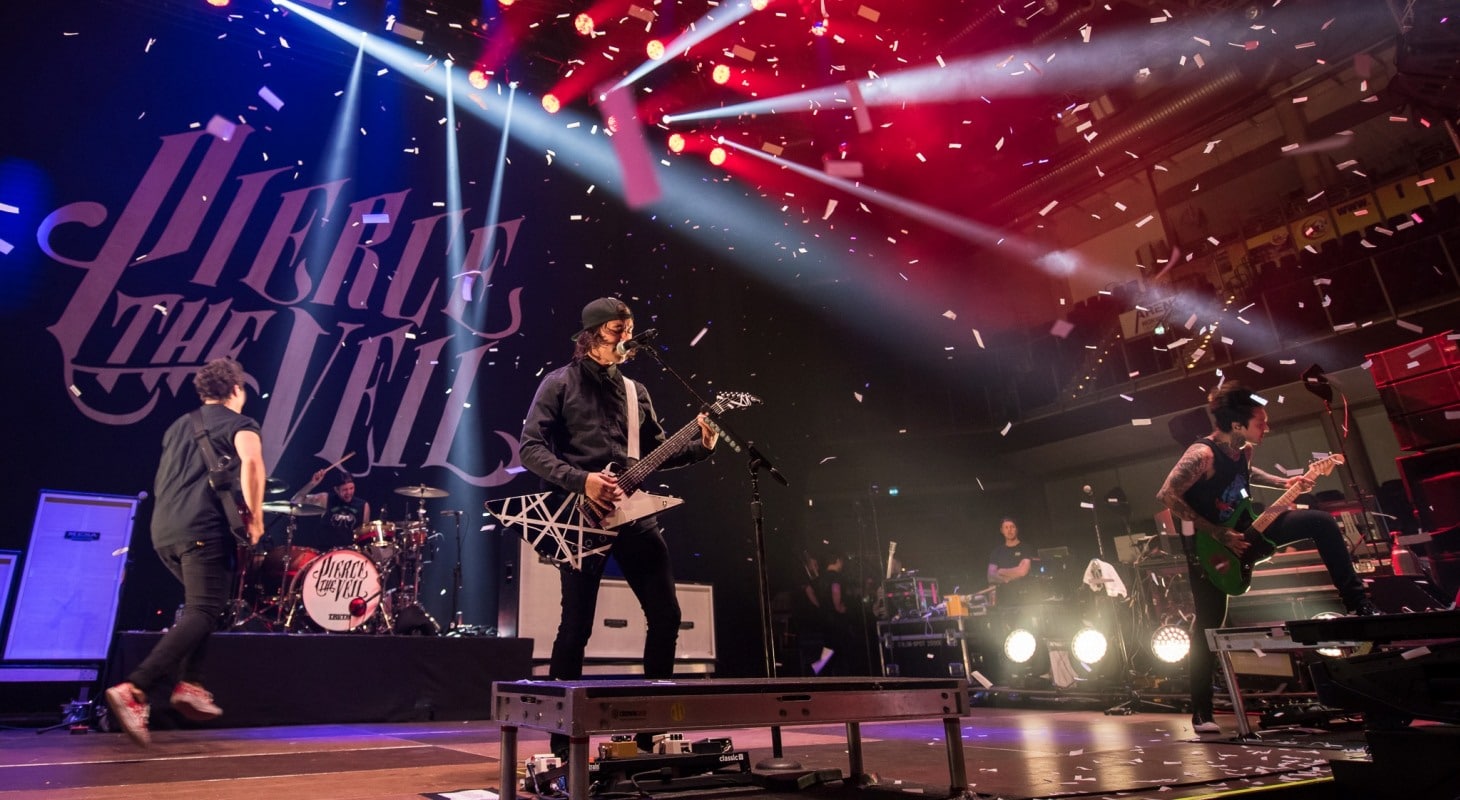Pierce the Veil is one of the leading bands of the mid-2000s post-hardcore boom.
Their aggressive, progressive music saw the band incorporating complex rhythms and melodies more commonly seen in prog-rock than among their hardcore contemporaries. With a keen melodic sense and a consistent Latin flair in their music, Pierce the Veil remain one of the top bands in their genre to this day.
If you’re looking to play along to your favorite Vic Fuentes and Tony Perry riffs, you’ve come to the right place. In this article I’ll take you on a tour of their choice of guitars, pickups, amps, and pedals, and how to use them to capture the crushing, powerful Pierce the Veil tone.
Table of Contents
Guitars
Tony Perry has enjoyed a lifelong love affair with ESP guitars, with particular affection for the double-cutaway ESP Viper. Perry tours with four Vipers, each in a different neon-inflected colorway, preferring to use a single humbucker in the bridge position for each one.

For a more affordable alternative than the full-priced Viper, I’d recommend the ESP LTD Viper, which is effectively the same guitar. Both feature mahogany necks and bodies with maple tops and powerful humbucking pickups.
It’s important to note that Tony Perry uses Seymour Duncan pickups exclusively. He typically uses the JB model, preferring the higher output of the SH-4.

Perry once used Gibson SGs, but switched to the Viper because of its larger body and 24-fret neck.
The Seymour Duncan pickups are a big part of his Pierce the Veil lead tone, so I’d recommend putting them in your guitar.
Vic Fuentes has long been associated with his custom-painted Gibson Explorer.

Fuentes actually had his guitar painted in tribute to one of his major influences, Edward Van Halen! The Explorer has a particularly mid-heavy tone, so I’d recommend sticking to that body shape. Probably the best affordable alternative to the Gibson Explorer is an Epiphone Explorer. You’d have to do the Van Halen paintjob yourself, though.
Of late, Fuentes has dabbled in playing a Fender Telecaster Deluxe equipped with humbuckers. The entry-level Squier Affinity Telecaster Deluxe is probably the most affordable variation on this guitar, or you could try the Classic Vibe Tele which is a little more mid-tier than the Affinity.

Amps
Tony Perry is an avowed fan of the 100-watt Marshall Super Lead, specifically a vintage 1971 model. However, to avoid risking damage to his beloved vintage amplifier, Perry prefers to tour with a Kemper Profiler, which he dials in to mimic the tone of the Super Lead.

My favourite cost-effective alternative to a full-powered Marshall stack is the DSL40C. It has offers all the Marshall grunt and roar you could hope for with lower wattage and a single twelve-inch speaker.
Vic Fuentes’ choice of amplifier is a little more mysterious. He claims that his main amp is a custom-made job too secret to share with the world. However, as a backup, Fuentes uses an Orange Rockerverb 100-watt amplifier, so it’s probably that his custom amp is voiced similarly to the Orange.

Orange amps have a particular saturated tone, so I’d recommend staying with the brand for an affordable alternative. The all-tube Orange Dark Terror is a terrific amplifier with a much smaller size at half the price. You will need to get a speaker cabinet like the PPC108, or pick up both in one package.

Pierce The Veil Amp Settings
For the classic thick, biting post-hardcore tone, you want a lot of gain and volume. Set your guitar to the bridge pickup, and dial your amp in with the settings below:
Gain: 10
Run your gain all-out. You’ll need a lot of distortion for this tone, so start at maximum and see where you go from there.
Bass: 8
You want a nice, thick bottom end for this guitar tone to make sure your lead lines and guitar melodies sound appropriately heavy.
Mids: 4
The sound of Pierce the Veil is a little “scooped” and lacks midrange nasality. You want just enough that your palm mutes sound appropriately chunky, but not much more than that.
Treble: 5
This is not an ice-picky treble-heavy tone. 5 should give you enough sparkle for your notes to be defined and not muddy.
Pierce The Veil Pedals
Finally, we want to look at Pierce the Veil’s choice of pedals.
Tony Perry relies on his Kemper for effects, but he is partial to phaser, reverb, and delay now and again. If you’re not using a profiler, I’d recommend the MXR EVH Phase 90 (with paintjob to match Fuentes’ Explorer), and the Boss Digital Reverb. These are not always-on effects, rather Perry uses them to color certain passages and sections of Pierce the Veil’s live set.

Vic Fuentes’ approach to effects is a little less straightforward. Fuentes, a massive Van Halen fan, also uses the Phase 90. I’ll note here that for Pierce the Veil’s phaser sound, you want to use either a script-logo model or the EVH model. The script circuit (also included in the EVH model with the striped chassis) has a different, warmer sound that the block logo circuit.
Fuentes also uses reverb, preferring dry digital to “drippy” analog reverb, and the Boss Digital Reverb is a great option for that. I would also recommend for his delay sound the Boss Digital Delay, a reliable, affordable delay pedal.

It’s important to note that neither Pierce the Veil guitar player relies on pedals for their distorted tone. Both guitarists prefer to drive their amps to saturation over a fizzier preamp distortion. If you’re interested, we’ve covered pedal vs amp distortion in this detailed article.
Final Word
Pierce the Veil’s red-hot riffs can be tremendous fun to play once you have nailed the right tone. The all-out rock setup of ESP Vipers and Gibson Explorers through cranked tube amps is a great tone for many uses, including thrashing your way through “King for a Day.”
As always with tone chasing, much of the sound is in your fingers, but as Vic Fuentes knows, emulating the gear choices of your heroes is an excellent starting point for finding a great tone.

